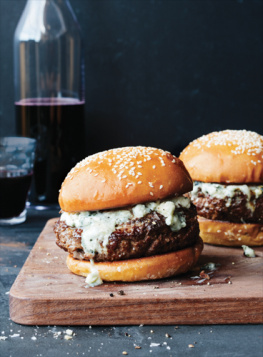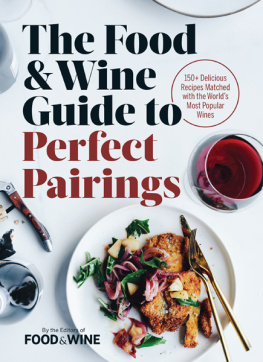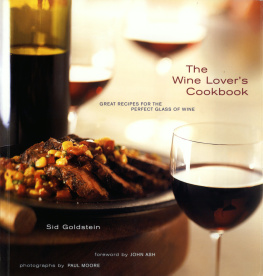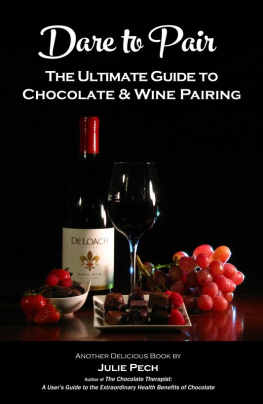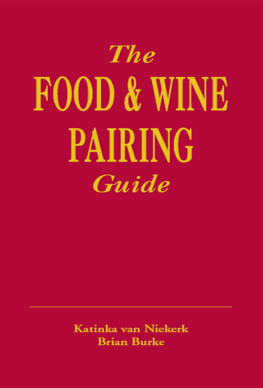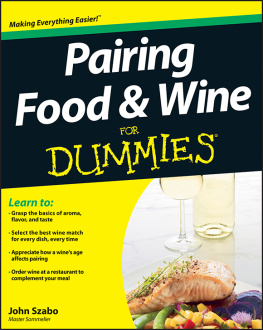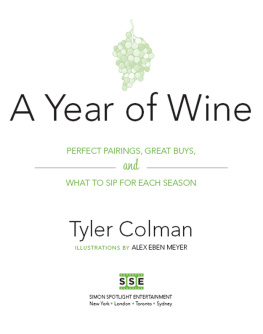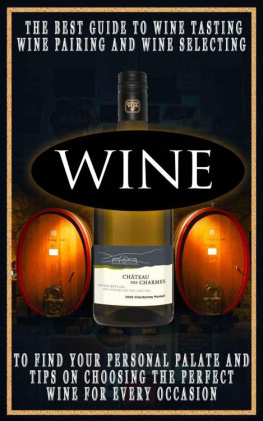Contents
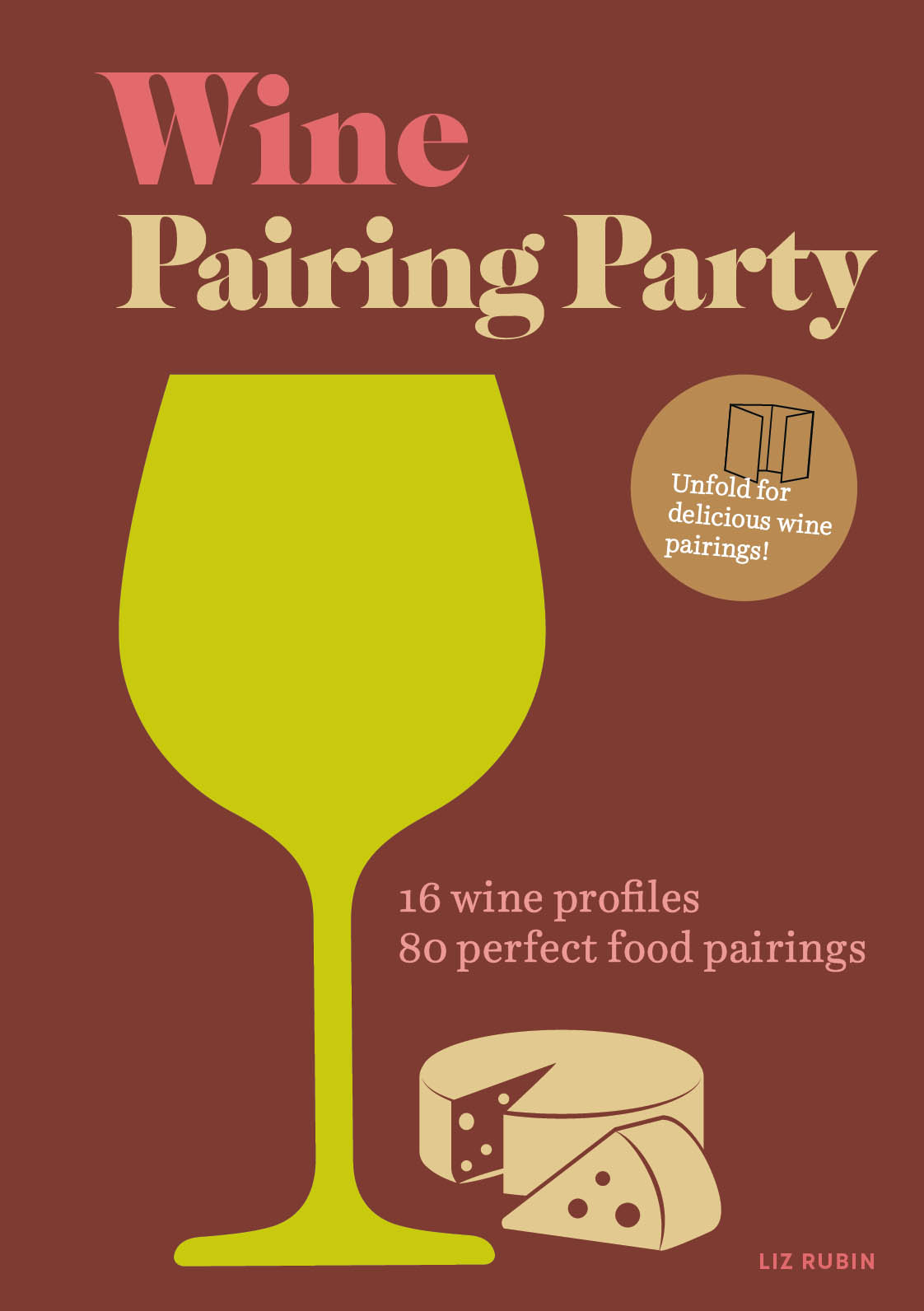

Copyright 2022 by Liz Rubin.
All rights reserved. No part of this book may be reproduced in any form without written permission from the publisher.
Library of Congress Cataloging-in-Publication Data.
Names: Rubin, Liz, author.
Title: Wine pairing party : 16 wine profiles. 80 perfect food pairings. / by Liz Rubin.
Description: San Francisco : Chronicle Books, [2022]
Identifiers: LCCN 2021011499 | ISBN 9781797203461 (hardcover)
ISBN 9781797204574 (epub, mobi)
Subjects: LCSH: Food and wine pairing. | Cooking.
Classification: LCC TX911.3.M45 R83 2022 | DDC 641.2/2--dc23
LC record available at https://lccn.loc.gov/2021011499
Design by Vanessa Dina .
Amaro Montenegro is a registered trademark of Montenegro S.r.l. Angostura bitters is a registered trademark of Angostura Limited. Aperol is a registered trademark of Davide Campari-Milano S.p.A. Campari is a registered trademark of Davide Campari-Milano S.p.A. Carpano Antica Formula is a registered trademark of Fratelli Branco Distillerie SRL. Cocchi Torino is a registered trademark of Giulio Cocchi Spumanti Srl. Instgram is a registered trademark of Facebook. Oscar Mayer Lunchables is a trademark of Kraft Heinz. Pernod is a registered trademark of Pernod Ricard. Salers is a registered trademark of Haus Alpenz.
Chronicle books and gifts are available at special quantity discounts to corporations, professional associations, literacy programs, and other organizations. For details and discount information, please contact our premiums department at or at 1-800-759-0190.
Chronicle Books LLC
680 Second Street
San Francisco, California 94107
www.chroniclebooks.com
THE WINES
Introduction
Through our unique cultural, spiritual, and regional experiences, we naturally become accustomed to pairing certain food and drink together. Our entire sense of taste is constructed in this way. A parent or another family member, crafting our school lunches, becomes the first arbiter of flavor creation and good taste in our lives. These early pairings become implicit in how we understand food. When I was little, Oscar Mayer Lunchables were extremely popular. In a basic way, these circles of meat and squares of cheese were the first charcuterie boards children of the 90s were exposed to. I was all about it!
When we are younger we strive to blend in with the immediate world around us, and food is one key element to demonstrate whether we are following the status quo or deviating from established norms. As we grow up we become exposed to other peoples and cultures ideas of food pairings, and that expands our minds and palates exponentially. We experiment and we tinker with what tastes delicious to us, and this helps us understand the elements needed for a balanced taste.
Adding wine to a pairing is understandably daunting. It can bring with it a seriousness that can take us away from whimsical experimenting and fun. Wine should be understood as simply more flavor to play with. Each type of wine introduces new aromas, textures, and elements of bitterness, tartness, piquancy, and earthiness that only extend the possibilities of where the pairing can go.
How to Use This Book
Having worked in the retail wine industry for the past ten years, I have learned that most people have a hard time describing what they like and asking for it. The if-you-dont-know-you-shouldnt-bother-to-ask idea prevents people from asking questions to better their understanding. Ironically, at the same time, I have noticed consumers becoming more flavor fluent with food. They have become more adept at using an expanded pantry full of different flavors, while social media has made recipes easy to be disseminated and edited. I want wine to be thought of in the same way, so one of the aims of this book is to break down wines into distinct flavors and help you understand them as ingredients that support the dishes you create.
This is not a book about wine. This is a book about pairing wine with food. Its divided into five sections: sparkling, whites, ross, light reds, and dark reds. Each of the five sections is then broken up into three types of wine. Each type of wine carries particular flavor notes, textural profiles, and distinct body characteristics. The wine types are supported with four pairings, a recipe, and a fun fact. The purpose here is to give you the tools to create perfect pairings.
The Key Is Always Balance...
Lets take the example of making a homemade stew (like Moms Bolognese) youve made many times before. The first step is creating a base of flavor: Youve added a mirepoix of aromatic vegetables, an herb bundle, salt, and pepper and you are letting everything caramelize. Next you add the meat and let the fat render and combine with the caramelized vegetables. Liquideither stock or canned tomatoes and cooking wineis added next to create a rich sauce. After simmering for an hour or two or four, depending on the recipe, you taste. When you do, you are taking stock of the flavors you have versus the flavors you are lacking. Do you need to add salt, pepper, a squeeze of lemon? Its easy to judge what you need when you are familiar with the recipe, but in the end, you are aiming to create a dish with balanced flavors. Pairing wine and food can also be understood in this same way. Each element in the pairing combines to create balancewhen one lacks in acid, salinity, pepper, or sweetness, another element contributes. Wine should be simply thought of as one element in the pairing that is contributing flavor.
Basic Glossary of Wine Vocabulary
ACIDITY: Acidity is the brightness that is associated with malic acid or acid found in fruit juice.
BODY: Body is the impression of weight the wine leaves on your palate. Fuller-bodied wines linger longer, as they tend to coat the inside of your mouth. Both whites and reds can be described as having a lighter or fuller body.
EARTH: Earthy wines have flavors that resemble the forest floor, rich soil, and roots.
FRUIT: Fruity wines have flavors reminiscent of fresh fruit. Common fruit expressions are tropical fruits, red fruits like raspberry and cranberry, blue fruits like blueberry, and black fruits like blackberry.
MINERALITY: Wines grown in mineral-rich soil display a flavor profile that is associated with rocks and metals.
SALINITY: Salinity is the saltiness that is usually associated with the maritime influence of certain vineyards.
SPICE: Spice-driven wines possess flavors of pantry spicesclove, cinnamon, anise, and pepper are common.
TERROIR: In its basic definition, terroir is the sense-based characteristics that define a place where the wine was cultivated. Taking the grape type out of the equation, soil type and geology, climate, and geography are the key elements of the terroir of a wine, as these factors determine how one wine differs from another wine.
How to Taste Wine
Wine tasting can really be divided into four aspects: sight, smell, taste, and understanding.
SIGHT: You can learn a tremendous amount about wine before you taste it. Body can be judged by the viscosity or legs that are present on the sides of a glass. The more viscous or syrupy the wine, the weightier it will be on your palate. The color in the glass can give clues to the amount of oak or simply the aging time. A tawny-colored wine can oftentimes mean it has spent more time aging in an oak barrel, whereas a bright ruby tone could signal youth and/or steel aging.


